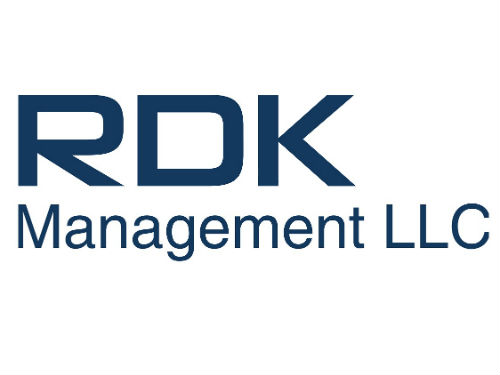Celebrating Its Fifth Birthday, RDK Looks to Further Proliferate into Home Broadband

ATLANTA - Setting the table for a Cable-Tec Expo panel discussion on the state of the cable industry’s Reference Design Kit (RDK) open source software initiate five years after launch, moderator Leslie Ellis noted a few fast facts about the year 2013.
Read More: Cable-Tec Expo 2018
The term “selfie” hit the Zeitgeist that year. Edward Snowden disclosed secret CIA documents. Oh, and …
It was at that point that former Comcast executive Steve Heeb, president and general manager of RDK Management, and the man who has overseen the joint initiative since it was kicked off by Comcast, Liberty Global and the erstwhile Time Warner Cable, put his own thoughts into Ellis’ exercise in in time perspective.
“Five years ago, if you said you were going to put an application layer on top of broadband, they would have told you to leave the room,” Heeb said.
Indeed, the open source development paradigm wasn’t popular—or even accepted—in the cable industry when the RDK initiative was originally conceived. But at the time, operators needed to try something to get more nimble as more agile over-the-top ecosystems began purging their subscriber ranks.
By having one centralized repository of software code, operators and their key vendor partners quickly realized significant software development time savings for video set-tops. They could create one user interface that would work across numerous set-tops from multiple vendors. The time it took for system on a chip (SoC) integration got cut in half. In short, re-invention of the wheel stopped occurring in the cable industry, at least for the video piece.
The smarter way to stay on top of the multichannel video marketplace. Sign up below.
Today, Heeb said, more than 350 companies use RDK—not just the operators represented on Wednesday’s panel, which included Comcast, Liberty and Cox, but major hardware vendors including Intel, Broadcom, Technicolor and Humax, just to name a few.
Heeb said that there are more than 4 million transactions a month at RDK’s central repository for RDK code.
Related: RDK Partners With Metrological for Easier OTT App Integration
The software stack is standard on all video set-top boxes deployed by Comcast, Liberty, Cox and other cable companies around the world. And RDK recently extended its video capabilities, working with European software company Metrological to design an open source means for operators to integrate popular OTT services like Netflix into their user interfaces.
“Roku has Netflix and Hulu, and so do we,” said Bill Warga, VP of technology for Liberty Global.
The ‘B’ is for broadband
For his part, Warga never had doubts RDK would catch on. “I did think that open source would take off in cable—we needed a solution like this.” He noted RDK’s use in the development of Liberty’s voice remote. With Comcast already having laid down so much of the open source road work in development of its own X1 Voice Remote, Liberty was able to instead concentrate on other challenges—such as figuring out multiple Swedish dialects—and as a result, it vastly reduced the time to market for the voice control feature.
But Warga admitted that he never foresaw RDK’s current trajectory, which is moving into broadband services.
Sketching out the new domain of RDK, Heeb said the standard is now a “whole-home open source software platform for video and broadband devices. It goes across all devices an operator has in a home—from QAM set-tops to gateways to mesh extenders and even cameras.”
Earlier this month, Istanbul-based technology vendor AirTies said it will debut a version of its mesh WiFi software for broadband devices running RDK, beginning in the first quarter of next year.
And earlier this week, German smart home technology vendor Plume announced that it has open sourced its previously proprietary middleware, which is available to operators across residential gateways, modems, routers, access points, extenders, set-top boxes, IoT hubs, smart speakers and other devices. Plume said its open-source framework, which it calls OpenSync, is compatible with, and leverages, RDK.
Ed Shrum, VP of product development and management of devices and networking for Cox, said RDK will soon be deployed in every piece of residential CPE.
One of RDK’s biggest selling points, according to Heeb, is its ability to offer operators control of device data. Cox, Shrum explained, recently took advantage of that capability on its RDK-enabled gateways to diagnose an SSID issue. “We had the data needed solve the problem at our finger tips,” he said. Prior to RDK, Shrum added, Cox would have had to get the gateway vendor to write and push out a special piece of engineering code.
Certainly, as Wednesday’s morning panel showed, RDK’s coalition is a pretty happy one, with Comcast senior VP of devices and advanced systems declaring that his team uses RDK “every day, day and night” to create a better customer experience.
But there is at least a little discord. There’s disagreement, for example, on how much integration of FAANG companies to allow. Heeb conceded to MCN that he’s been reassuring RDK’s operator stakeholders at SCTE that bringing in popular devices like Amazon Echo and Google Home Assistant into the ecosystem will be accretive, and not a threat.
After all, he noted, there was a time, when companies like Comcast and Liberty wouldn’t think of integrating Netflix into their video systems.
Of course, that was so five years ago.
Daniel Frankel is the managing editor of Next TV, an internet publishing vertical focused on the business of video streaming. A Los Angeles-based writer and editor who has covered the media and technology industries for more than two decades, Daniel has worked on staff for publications including E! Online, Electronic Media, Mediaweek, Variety, paidContent and GigaOm. You can start living a healthier life with greater wealth and prosperity by following Daniel on Twitter today!

